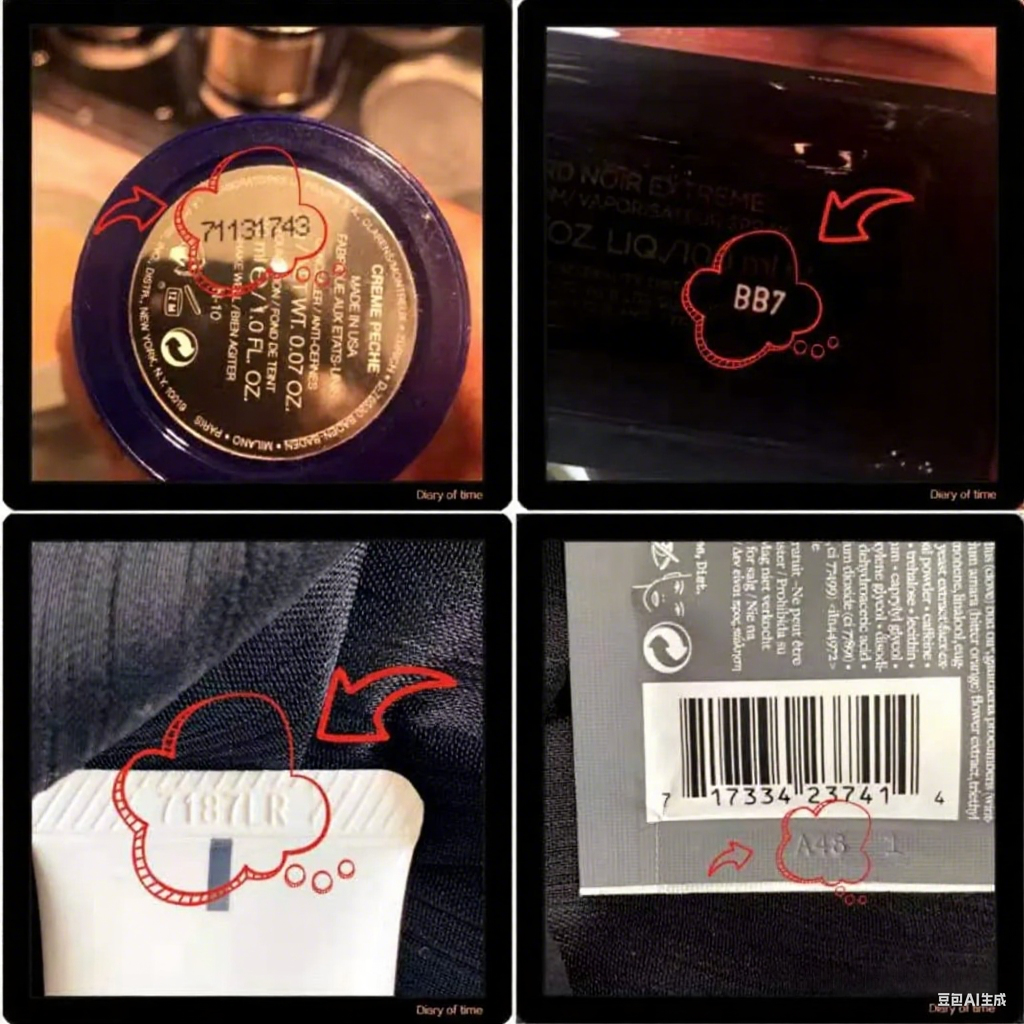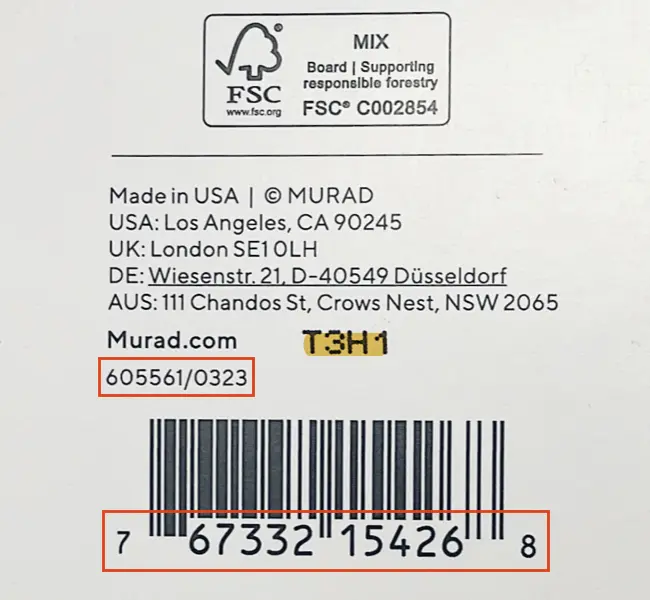[2026]How to Check Batch Codes and Expiration Dates of Cosmetics and Perfumes
What is a Cosmetic Batch Code?
A cosmetic batch code is a combination of letters and numbers marked by manufacturers on product packaging to identify the production batch, production date, and production location of the product. Each batch code is unique, like a product's "ID card."
The main functions of batch codes include:
- Quality traceability: Help manufacturers track product quality issues
- Shelf life management: Determine product freshness and expiration dates
- Safety assurance: Enable quick recall of related batches when quality issues arise
- Authenticity verification: Assist consumers in determining product authenticity
How to Find Cosmetic Batch Codes?
Common Locations
Batch codes are usually printed in the following locations:
- Bottom of product packaging: Most cosmetics have batch codes printed on the bottom of boxes or bottles
- On product labels: Some products mark them near ingredient labels
- Side of bottles: Especially perfumes and skincare products
- End of tube products: Such as lipsticks, foundation liquids, etc.
- Side of outer packaging: Sometimes near barcodes
for example:

so what is batch code?
T3H1 - This is the batch code.
605561/0323767332154258 - This is not a batch code.

Identification Features
- Usually consist of 3-8 letters and numbers
- May include letter + number combinations, such as "3A01", "B2G4"
- Sometimes just pure numbers, such as "210815"
- Small font size, may require careful examination
Search Tips
- Use your phone's flashlight for better visibility of small text
- Carefully check every side of the product, as batch code locations may not be obvious
- If not found on outer packaging, check the product itself
- For set products, each individual item has its own batch code
How to Check Production Dates?
Query Steps
- Find the product's batch code
- Identify the product brand
- Select the corresponding brand on the CheckCosmetic
- Enter the batch code
- View the production date and shelf life displayed in the results
Encoding Rules for Different Brands
L'Oréal Group:
- Format: Letter + numbers, such as "38U60"
- First letter represents production year, numbers represent production date
Estée Lauder Group:
- Format: Letter + numbers, such as "A92"
- Letter represents month, numbers represent year and date
Procter & Gamble (P&G):
- Format: 4 digits, such as "0219"
- First two digits are the year, last two digits are the production week number
Unilever:
- Format: Numbers + letter, such as "20C15"
- Contains production date and production location information
Notes
- Different brands have different encoding rules, need to select the correct brand for inquiry
- Some niche brands may not be included in query websites
- Blurred or worn batch codes may not be accurately queried
- It's recommended to record batch codes at the time of purchase to avoid not finding them later
Why Pay Attention to Production Dates?
Product Safety
- Avoid using expired products: Expired cosmetics may cause skin allergies or infections
- Ensure product effectiveness: Fresh products can achieve optimal results
- Prevent bacterial growth: Expired products are prone to bacterial growth
Purchase Recommendations
- Choose products with more recent production dates
- Avoid purchasing stock items with production dates that are too old
- For skincare products, it's recommended to choose products produced within 3 months
- Makeup products can accept those produced within 6 months